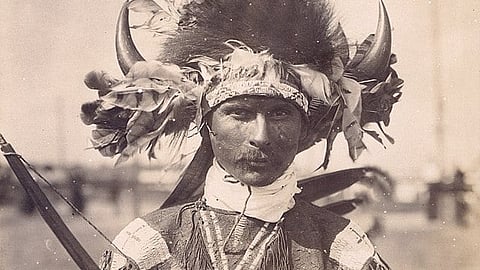
- Destinations
- Experiences
- Stay
- What's new
- Celebrating People
- Responsible Tourism
- CampaignsCampaigns
- Subscribe
- Buy Now

Sliding into someone’s DMs has become the norm in our technologically-saturated world but imagine courting someone by whistling.
Whistled languages emerged in many cultures across the world because whistled speech goes further than ordinary shouting. Such languages typically originated in places where the people lived in mountainous terrain or dense forest. While the information conveyed usually revolved around public announcements, they were also used by some to court one another. Whistled speech mimics the tones, vowel formants and even the intonation of spoken languages so that listeners can understand them.
The erasure of indigenous cultures around the world, the dominance of languages like English and the double-edged sword of technology, which can help and hinder the survival of languages, threatens the future of whistled speech. UNESCO has listed many whistled languages as Intangible Cultural Heritage in a bid to preserve their importance to local communities and cultures.
Here are five of the most well-known whistled languages you should know about.
Residing in places like China, Vietnam and Laos, along with a thriving diaspora in Western countries, the Hmong practise one of the few whistling languages left in the world. Using their fingers and mouth, they whistle love songs, laments and pleas to the spirit world, but also use leaves, bamboo flutes and a traditional instrument called a qeej to augment their communication over long distances. This alchemy of speech and music was employed by herders, hunters and farmers to communicate with one another, and the beauty of their language is like hearing birdsong.
The Hmong have formalised their language in written form called Romanised Popular Alphabet. It was created from 1951-53 by a group of missionaries and Hmong advisers and is the most widespread system for writing the language in Western countries. In China the language is written with Chinese characters and in Thailand, it is written with the Thai alphabet.
Used by the residents of La Gomera in the Canary Islands, the silbo gomero would traverse the ravines and valleys of the island and reach people up to five kilometres away. Everything from event invitations to public information would be conveyed by the whistles. UNESCO declared the silbo a Masterpiece of the Oral and Intangible Heritage of Humanity in 2009.
The language has two to four vowels and four to 10 consonants. Each vowel or consonant is replaced with a whistling sound and is distinguished by its pitch and continuity. While all of La Gomera's inhabitants understand the language, only those born before 1950 and the younger generations who attended school since 1999 can speak it. Silbo’s whistling techniques require physical precision and strength in the body parts used to produce the complex language.
The village of Kuşköy (‘village of the birds’) is home to the high-pitched whistles and melodies of the native populace. Turkish farmers invented the language to communicate over the rugged terrain four centuries ago. Tea invites, help with work, and announcements of funerals, births and weddings were just some of the information exchanged through whistles. UNESCO added kuş dili to its 2017 list of Intangible Cultural Heritage.
The community has held a cultural and art festival since 2017 to celebrate their bird language. People compete against one another before a panel of judges, and the winner is deemed to be the one who whistles the given instructions best.
The Kickapoo tribes of Texas and Mexico communicate orally but their whistled speech is only found among the inhabitants of Coahuila state. The pitch and length of vowels and vowel clusters are represented in whistled form while vowel qualities and consonants are not. Teenagers and young adults of the Kickapoo community pioneered this form of speech around 1915 to court one another without their parents' understanding. Users cup their hands together to form a chamber then blow into the chamber with their lips placed against the knuckles of their thumbs. To alter the pitch of their whistle, they lift their fingers from the back of the chamber.
The Chinantec people live in Mexico’s Oaxaca state where the terrain is mountainous and not easily accessible. The rhythm and pitch of ordinary Chinantec language allows speakers to have entire conversations only by whistling. Its sound carries better than shouting across canyons and messages can be exchanged up to one kilometre. Only Chinantec men use whistled communication, although women also understand it.
